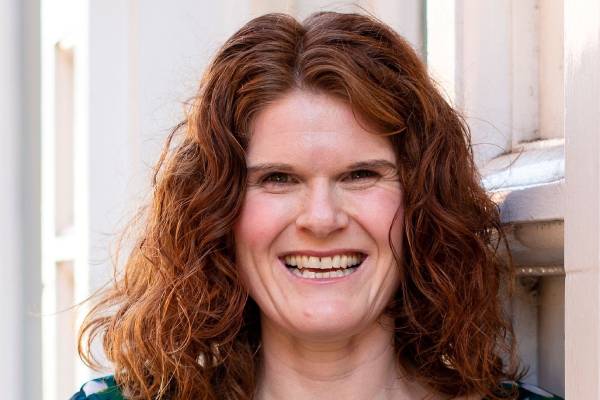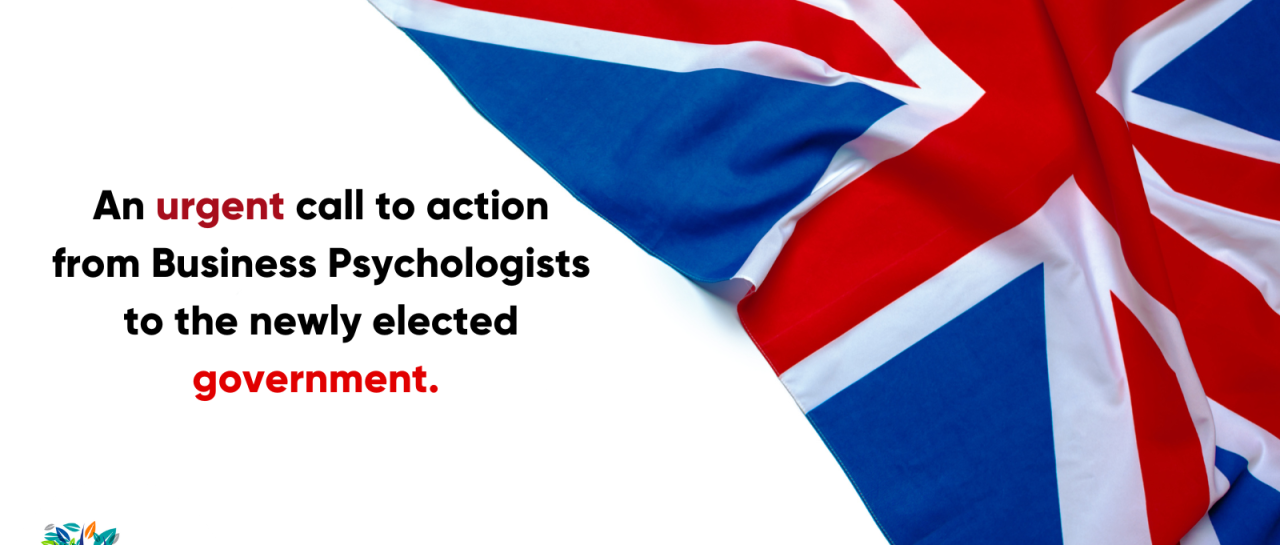Authored by Certified Business Psychologist Laura Howard. Certified Business Psychologist, Laura Howard, reflects on the webinar she recently delivered to ABP members. Below she outlines the main findings of her published research uncovering systematic barriers women face when being authentic as leaders. Importantly, she gives…
Robin Hills
John Fisher
“The Change Curve”
14th April 2021
“Organisations don’t change but people do!” argued John Fisher in presenting his Change Curve theory, supported by Robin Hills with his practical experience of assisting individuals to unlock their Emotional Intelligence to navigate change in the context of challenging dynamics in organisations. John then set the scene by referring to George Kelly and his Personal Construct Theory which models approach to behaviour consistent with similar events on previous occasions.
Individuals are only limited by the boundaries of their own creativity and this determines their management and effectiveness in responding to external factors such as resetting their careers when change is forced upon them. To this extent we are all scientists experimenting with what works for us. Kelly identified that people develop their own meanings and experience the same situations in different ways: he also postulated that “we assume that all of our present interpretations of the universe are subject to revisions or replacement”. In other words, we are heavily influenced by experiences, comparisons and how we formulate intentions for action.
His Sociality hypothesis builds on this: “How well we understand the construct of another person impacts how effective our interactions with them are”. Understanding other members of the team is an essential component of the construct in creating an environment where team working can be improved and the pain of change can be reduced. Tuckman reinforced this concept by showing that sharing of ideas is the pathway towards common understanding.
These are straightforward concepts, but as John explained in his work with an alcohol abuse charity, people can assimilate and enthusiastically embrace ideas at a first session, but then derail by failing to follow up with a second session. Why? This experience can be replicated in everyday circumstances where people’s behaviour can alter when they are faced with change or a new situation. The Kubler Ross curve goes a long way to explaining how people change and their reasons for modifying behaviour: bereavement through losing a loved one is a good example of how people can react and how emotional support can make so much difference. Extending this concept to counselling in business, KR needs some modification and a new “Curve” but the principles are much the same: the key point is that change has an impact on one’s sense of identity and self-understanding which in turn how we work and manage the phases within the curve.
Everyone has their own interpretation of their “Curve” and the timescales of the different phases can vary but we can learn and grow by recognising the individual elements. Breakout groups analysed elements of key features which were subsequently discussed in a feedback session in relation to their position on the Change Curve:
Hostility. Background: Coming to terms with how you have been affected by change can make you hostile. You are part of processes which have failed or are for whatever reason are surplus to the new way of work. You can get stuck in this phase even though you try to move on and accept the new order.
Discussion points:
- Anger develops and becomes externalised.
- Recognition of the person and the feelings as normal responses coming naturally from individuals.
- There is an element of searching for autonomy and exercising of control: it is important to understand the implications of this: we need to manage it and work with it. Help is often needed to move out of this difficult phase: this can take the form of trying to identify what we might like about the new system and avoiding the “saboteur” mentality.
Denial. This phase is defined by a lack of acceptance of any change. You continue to act as if change were not occurring, using old practices and processes and ignoring any signs or evidence. It is easy to get stuck in this phase.
Discussion points: Here there is
- Inaction can be permitted (though obviously not the ideal solution) in this phase, allowing us to stay in denial.
- It requires a large investment in internal energy, risking causing an anger reaction which can be counterproductive, to progress beyond this phase.
- There could be a conflict between Manager and Change Champion, depending who had direct responsibility for implementing the change.
Guilt. Background. This phase explores core beliefs. These result in an awareness of previous inappropriate actions and can trigger guilt as you become aware of the results of your behaviour.
Discussion points:
- It involves a recognition of personal responsibility got past failings and the need to find a way of moving forward.
- This is similar to the trait identified in Appreciative Inquiry, where guilt forces you to feel that it is worth making a commitment to something you would not normally entertain. A related but different point is that this state generates a willingness to take a positive attitude and be more flexible in a supportive “coaching” environment. The situational engagement and coaching style leading to building some momentum down the curve is critical to moving out of this state of mind.
- Guilt is awareness acted out of line with values “I didn’t do as well as I could”. An Appreciative Inquiry approach can help a “looking forward” solution focus. Experience shows that Optimism is always just around the corner waiting to emerge. Anything to help “Self awareness” moving towards better self regulation, looking at issues with an optimistic manner such as “How do you work better with the person in charge?” can only be positive.
Disillusionment. (This isn’t for me – I’m off). This can be the result of a realisation that your values, beliefs and goals are incompatible with those of the organisation. You can gradually withdraw, become demotivated and doing the bare minimum.
Discussion points:
- Disillusionment can happen at any point in the curve and can be a terminal derailer. It can result from mismatches with expectations affecting level of engagement. The type of response is key to the quality of the support.
- The most common reaction is “Change is not for them” and “I’m off”. It is natural to try and find a way forward, but in many cases little can be done and the best that can be done is for the organisation to provide support for decisions already made and the inevitable. This will help the individuals and the organisation.
- Quality of and commitment by management is key. One of the biggest tragedies is that many managers have such big egos that they are not big enough/grown up enough to cope. Such a situation underpins Kelly’s findings that it is “My Life” and others need to understand the situation from another’s perspective.
Fear. An awareness that change will force a new way of thinking, working and behaving. You have to act differently and this forces the spotlight on to you: this drives fear and then anger at those perceived responsible for change. Part of the anger is to bargain, to try to return to pre-change situations.
Discussion points:
- This is at position A on the Curve near to Hostility, just beyond Denial. Reality starting to set it and the threat is perceived.
- Bargaining can result in perhaps shortening the curve but there is some reticence to move beyond the position.
- A bigger process of shift requiring more energy to move beyond this point.
- A possible way forward is to engage in activities around allowing people to vent their feelings: acknowledge losses and be explicit about what they can bring forward into the next stage of the change.
- Fear should come before hostility. Threat – Fear – Disillusionment – Hostility – Guilt
Acceptance. This phase is characterised by emotional detachment and a reliasation that you are part of the change process and begin to formulate goals around your new needs and wishes.
Discussion points:
- It is actually easy enough to get stuck because at this point there is almost certainly unfinished business.
- People are looking to a safe space so that they can encourage expectations, but in order to do that they need to stop reflect and think before moving forward. “Testing and Experimentation”.
- You are hoping to move to a position where there is a clear vision of the future, but in many cases, there is an unwitting need to reflect back on previous events.
- The process of looking forward is coming to terms with the changes and being part of a future vision which people can buy into
But the real enemy is complacency – wishing away the problem and then doing nothing, reminiscent of the situation with no shows at the second alcohol treatment session. The Change Curve starts with complacency and nothing usually happens at this stage, but herein lies the danger. Change rapidly leads to
ANXIETY – arising out of, for example, reorganisation and a new structure. It is natural to wonder how to work and cope with a different role and reporting environment
HAPPINESS – this is better described as relief, as one can see the possibilities for improvement over poorly functioning former systems.
THREAT – To core identity with no new rules yet established . This usually accompanies life changing experiences.
ANGER – a general emotion vented on everyone around you, a generalised internal anger
DESPAIR – confusion/clinical depression. No way forward can be seen: this condition can lead to long term illness and the need for long term medical support. This can result in looking back with a malaise of regret and worse.
DISORIENTATION – Who am I? What am I? What am I doing? Although there is a feeling of unpleasantness, we reframe how we perceive emotions and recognise value in them.
FINAL PHASE – energy generating: this can help us to experiment with our environment actively and effectively.
This leads to self awareness, self questioning of choices and better judgement.
In short, the Curve is a journey of peaks and troughs, giving us implications of impact, a sense of identity, a sense of self. Just as Kubler Ross demonstrated the generation of an inner energy through assistance in bereavement, appreciation of the Change Curve can make us more effective at dealing with our emotions, be they pleasant or unpleasant, helping us to develop a sense of identity.
The curve is about exploring the understanding of emotions. Change can be a source of creativity: as you move through different phases, these can provide different experiences.
In conclusion, it is all about “What works for you”. There are no precise answers: the Curve is a useful framework which can be used as a tool to assist in the course of professional activity. Coaching can assisting in exploring what your answer is.
“Helmut Kohl” – If I’m selling I speak your language and if I’m buying you speak my language “Sprechen deutsch”. Working on a Change Curve has considerable parallels.
RT
14Apr21



